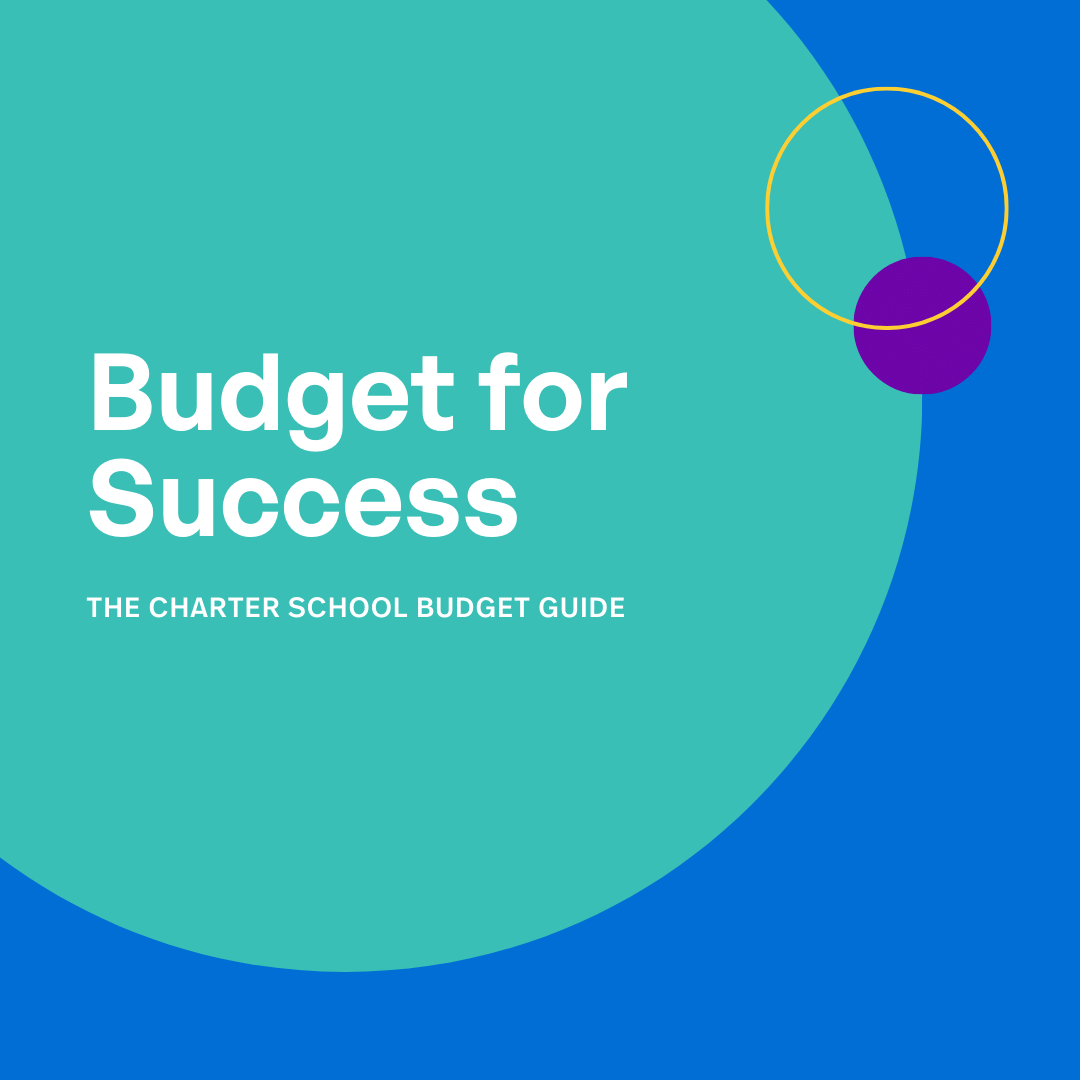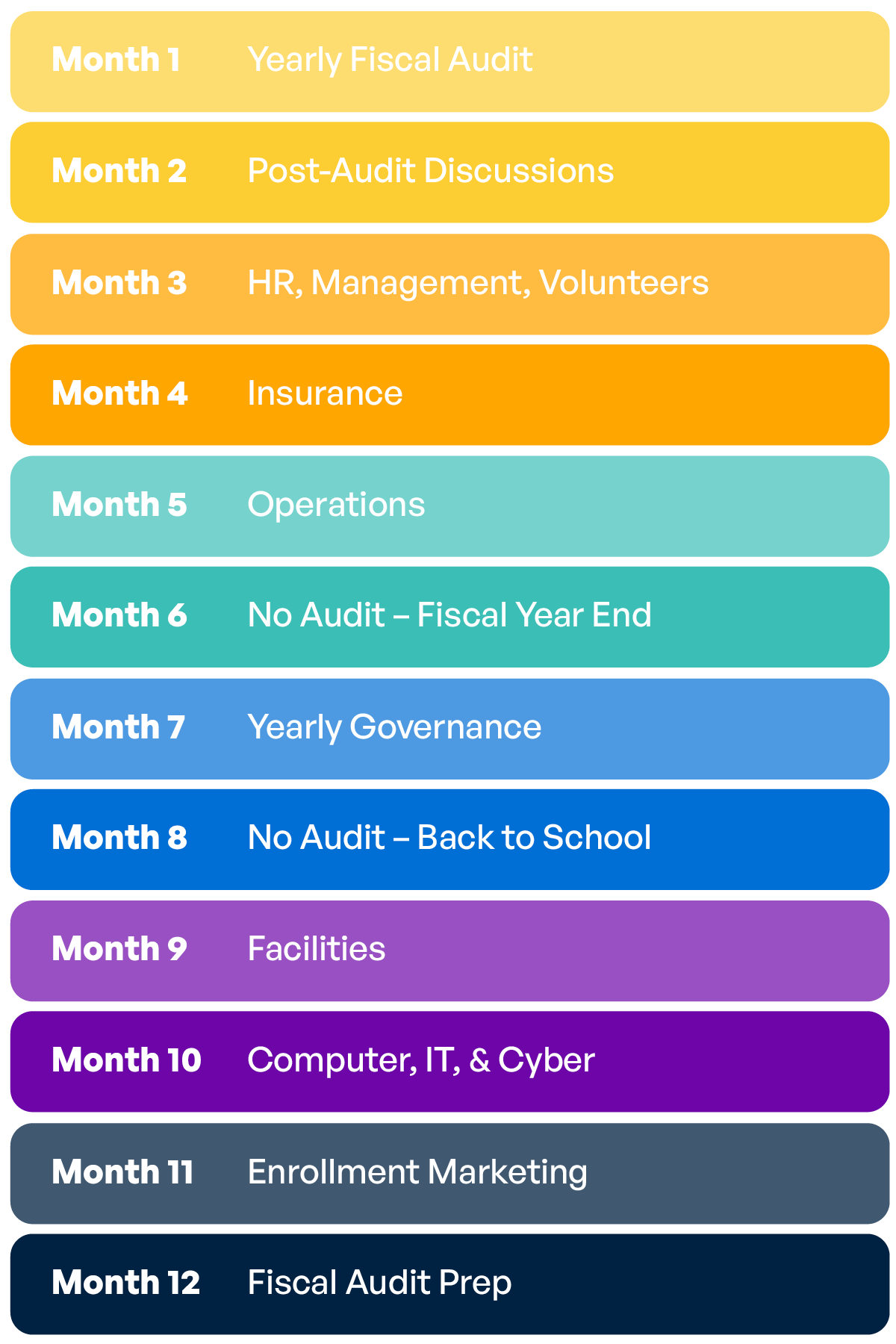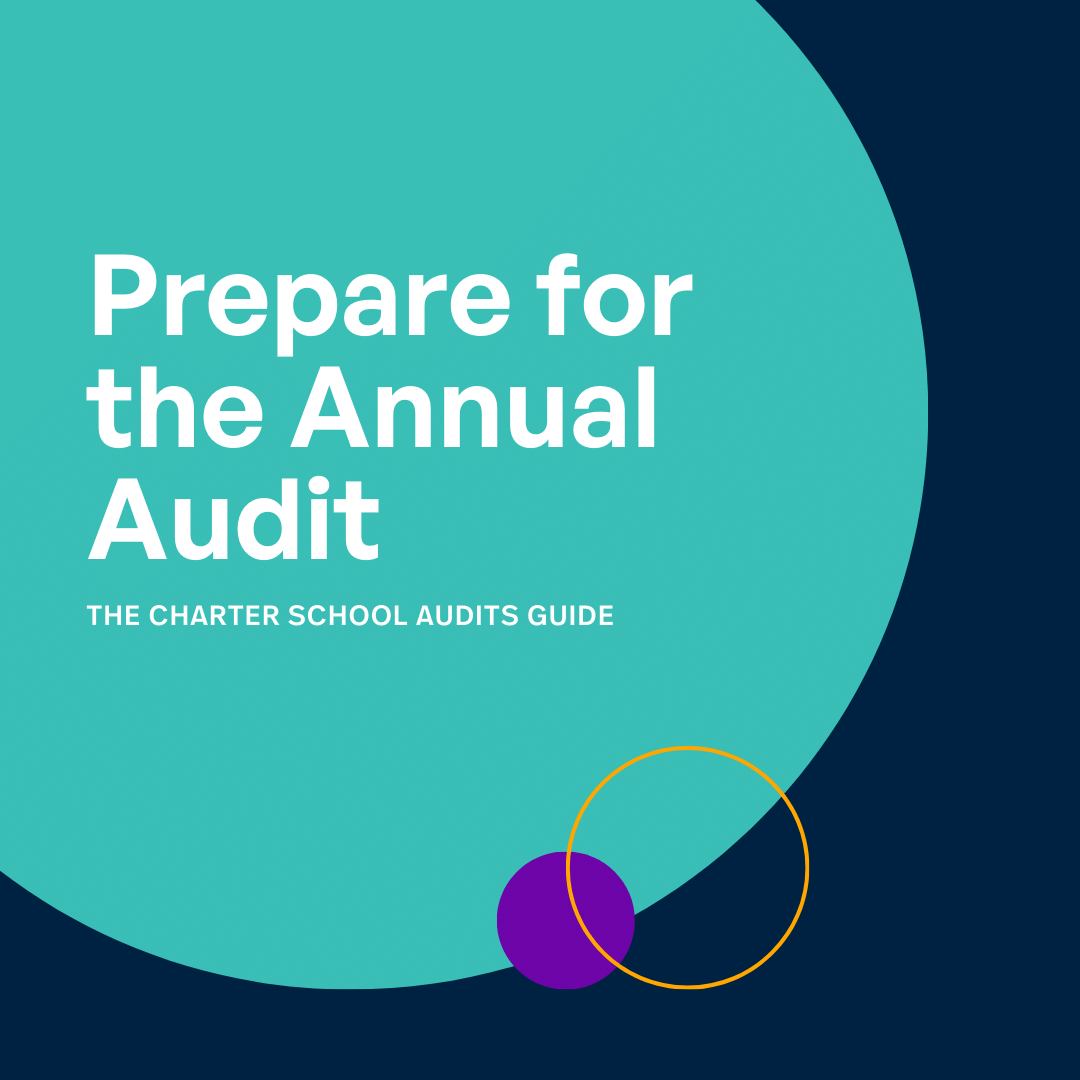In this session, Megan Ullmann joined Michael Barber and Ashley MacQuarrie to discuss specific enrollment marketing tactics for schools in that growth phase—years 2-7. They spoke about hosting events, analyzing academic data, using social media and Google search ads, and establishing a stronger “ground game” presence in the community.
Join the experts as they answer all your questions live on Thursdays on YouTube at 10am PT / 12pm CT / 1pm ET. Charter School Capital – YouTube
Read the Full Transcript:
Michael B. (00:16):
Hi, everyone, and welcome to our weekly Thursday series on all things enrollment marketing. My name is Michael Barber and I am joined by my ever-present co-host, Ashley MacQuarrie. Ashley, how are you today?
Ashley M. (00:31):
Doing well. How are you, Michael?
Michael B. (00:31):
I’m well, thanks for always coming in to duties on a weekly basis with us. We’re also joined by a new face, Megan Ullmann. Megan, welcome to the program.
Megan U. (00:41):
Hi, Michael. Thank you. Happy to be here.
Michael B. (00:44):
Thank you for being here. Do you want to take a quick second and just introduce yourself to all of our viewers this morning?
Megan U. (00:51):
Sure. My name’s Megan Ullmann. I’m a project manager, Charter School Capital, and work on the enrollment marketing team. This is my third season.
Michael B. (01:00):
Awesome. Well, thanks for joining us. We asked Megan to come chat with us specifically today because you’ll recall over the last couple of weeks, we’ve talked about different tips and tactics for schools depending upon the stage of growth that we are in. We often refer to schools in three stages of growth. Our startup schools, those could be year zeros or you’re just in the concepting phase of your school through about year two. Your growth phases. That year two, three period through about year six, seven, eight, and then our mature schools at about year seven or eight and beyond. Last week, we focused on our startup schools. This week, we’ll focus on our growth schools and Megan has some incredible experience there so we’ve asked her to come in to have a chat about specific tactics that school leaders could use as their schools are in that growth phase.
(01:53):
Megan, I’m going to allow you to just tee it up for us and answer that question. What are some key tactics or tips that school leaders can be using to drive enrollment as they enter that sort of two to seven year period of growth for their school?
Megan U. (02:11):
Well, as you know, a lot of the foundation is kind of late in that first year with helping a school get to know their voice and doing some kind of foundational things like building out a website or creating print collateral for them, working on logo, branding, maybe helping with the tagline. While there’s a lot of successful programs that we can do in that first year, it really gets interesting in that second and third year, even fourth year for a school I’m working with because I’ll take work and take that foundation and just enhance their presence in each market.
Michael B. (02:59):
Yeah, it’s such a good idea there in terms of getting them started. As they mature into that year two and beyond phase, obviously things are going to become more important. Things like events, things like your ground game. What are some things specifically related to events and ground game that school leaders can think about as they’re growing?
Megan U. (03:21):
Yeah, events is a good one because while they might have touched on that a little bit in their market, we can help them figure out where to be because we have a better sense of their market, who’s responding to them. Depending on where they are, we could help them set up tabling events at farmers’ markets or sporting events or malls, movie theaters, and we can also help expand what that event presence looks like. Sometimes, schools will just start with a six-foot banquet table with some flyers on top, but we can elevate that for them with some branding. If it’s a pop-up tent, depending on where they go, we could brand that. We could set them up with a branded tablecloth linen. We could help with some talking points to help some school staff put on a marketing hat and help steer their messaging a little bit.
Michael B. (04:25):
Yeah, it sounds like the opportunity, especially when you’re in those growth phases is to get more sophisticated, is to start thinking about how you bring that brand to life, maybe some events that you might have not thought about before and just showing up in a more sophisticated way. Is that sort of the case that you’re recommending to school leaders is as they’ve got that brand under control, they’ve built it up to a level where they can start doing more sophisticated events, more sophisticated opportunities?
Megan U. (04:56):
Absolutely, and we’re working with a couple schools right now who are repeat schools, where we’re actually exploring the opportunity of doing a brand ambassador internship where we might hire somebody who’s an alum from the school and they can hit the streets and go out and distribute collateral or stickers, where they know that their potential prospective students and families will be. It works really well with high schools in particular because high school students and recent graduates know where high school kids hang out so that’s something fun we’re exploring with.
Michael B. (05:40):
That’s such a good idea to think about your students and your kids and activating them in interesting ways potentially when it comes to events and your ground game. Because obviously if they’ve had a successful experience with you, and I’m making an assumption here that school leaders are going to find those kids that have had big, impactful, positive experiences at their schools, they become incredible brand ambassadors for their schools, correct?
Megan U. (06:08):
Absolutely. Really, somebody who’s been at the school or works at the school is probably the best person to talk about that school, but we can still help curate that experience and give some talking points and encourage and educate people on how to engage with the public.
Michael B. (06:31):
For sure.
Megan U. (06:31):
A lot of we do is digital marketing, which has been really successful, but I think we never underestimate the power of parents’ word of mouth, high school students’ word of mouth.
Michael B. (06:47):
I mean, word of mouth across the board is going to be incredible for schools, nevermind any other type of it or organization and how you activate that, whether it’s in the ground game or digitally on review sites and whatnot. It’s certainly an area that schools need to pay attention to.
(07:04):
Thinking about activating in a digital way, Ashley, Megan did such a good job of bringing ideas to life for school leaders as they’re going through this growth phase. But obviously school leaders have got to get more sophisticated when it comes to their digital efforts as they’re growing. What should school leaders be thinking about as they start to get into that two, three, four, five year period when it comes to digital efforts that they’re doing to drive kids into their schools?
Ashley M. (07:36):
Well, by a couple of years in, you should have some data. I think we touched on this the first week that we started talking about this. You have some data, and if you don’t have data, then that’s something that you need to start paying attention to is like how are people finding your website? What areas are they coming from? If somebody submits an application, are you starting to see trends of specific zip codes that they’re coming from? Are you starting to see that maybe you’re reaching a new population that maybe you didn’t even know about? Maybe people are coming to you from a new area that you weren’t specifically targeting. Maybe there’s an opportunity there, maybe word of mouth is getting out in that area. Looking at that data, tracking it, and then making decisions about how you’re going to grow your visibility in these areas, what’s working? What’s not working? Maybe there are things that you’ve been spending on that you don’t need to focus on because they’re not really having an impact for you, but maybe you’ll learn that maybe other things are working.
(08:38):
There are definitely other more sophisticated digital advertising tactics that we can do. We might start out with very basic social media ads and very basic Google Search ads, but we will learn what kind of ads people resonate with will. We also will maybe have opportunities for things like display ads that re-target people who have maybe engaged with you somewhere, maybe have visited your website and then we can show them an ad on another website somewhere else while they’re browsing. There are things that we can do as you start to drive more traffic to your website, as people engage with your ads more, as people enroll in your school, you can use that and use what’s working and what you’ve learned to expand your efforts.
Michael B. (09:27):
It feels like you’re both hitting on a common theme here, which is the level of sophistication that you can start to do when you get to year two, three and four and beyond, right? Hopefully, as a school, you’re less concerned about making sure that you’ve got at least the minimum amount of kids in the door and in that growth phase trying to grow your enrollment and it’s starting to get more sophisticated both on any of the ground game efforts, your community building, your digital marketing. It’s all about starting to refine those things, given you know where those kids are getting interested in your school and what’s ultimately converting for the school as well.
Ashley M. (10:02):
Yeah, and you should have, to Megan’s point about leveraging your students and your alums at events. I mean, you can do the same with your content, so publishing consistent content, updating your website frequently, highlighting, publishing on social media. Often, some of the best content that you can share is about the people who make your school special, so your teachers, your staff members and your students and alumni, and so looking for opportunities to highlight them now that you should have, hopefully, some people who’ve had great experiences with your school, maybe opportunities for PR to highlight an alum who’s doing something great or a counselor who’s won an award or things like that. There might be more opportunities for that kind of thing a few years in.
Michael B. (10:50):
Yeah, just hitting on the PR thing, I think we just worked with a school who was launching a new program. Micanopy. Am I saying that correctly?
Ashley M. (10:58):
Yeah, that’s right. Micanopy.
Michael B. (11:00):
Micanopy. Sorry, I have never been there and I at least didn’t totally butcher the name. Micanopy had launched a new program and turned to us for some help with some PR efforts, and we got some placement in local media, which can be, as your school’s growing, either one of you talk to just how school leaders can start to build relationships with the reporters or local publications? What do you see school leaders doing there? Either one of you, either Megan or Ashley, any thoughts there?
Megan U. (11:35):
What do you think, Ashley?
Ashley M. (11:37):
Well, one thing I can say is that your agency, if you’re working with us, if you’re working with another marketing agency or a PR agency, they can help you find those opportunities. They can figure out okay, what reporters cover education in your area? Where should we pitch our story to? But it’s really the school leader that should have that relationship with those reporters because that’s going to be something that you can maintain over time and you’re going to have somebody that you can reach out to and say, “Hey, we’re having an event. Why don’t you come on out to your local radio station or a TV station?” I know that especially in smaller communities, smaller community publications, you have a pretty good shot of getting somebody to come out if you’re having an ice cream social or a big game or something like that. They’re looking for stories, and so if you have that relationship with local reporters, they can get you some attention.
Michael B. (12:32):
Yeah, certainly a very good play, for sure. Anything to add there, Megan? I saw you starting to talk.
Megan U. (12:38):
Yeah, I was just going to add, depending on how active the school is in their community with partnerships and programs, I think that could also turn into a story, depending on what that relationship looks like and how much a school is doing for giving back.
Ashley M. (12:56):
Yeah.
Michael B. (12:58):
Yeah, and also thinking about maybe your school has the executive director or the school leaders, maybe a teacher that’s a thought leader in a specific space relates to school challenges like teacher attention and whatnot. Those could be areas where you could potentially offer some perspectives as well for reporters as they’re looking for sources.
Ashley M. (13:20):
Yeah.
Michael B. (13:20):
Well, I want to be respectful of time. We always go over on our usual commitment of 10 minutes, and we are plenty over at this moment and feel like we’ve done some good work this morning on providing some tips and tactics for schools that are in that growth mode. I’m going to say thank you to Megan for joining us. I hope you’ll come back again in the near future and have a conversation about other tips we could provide for school leaders. And as always, a big thanks to Ashley for joining us every week. Thanks, y’all.
Megan U. (13:48):
Thank you.


